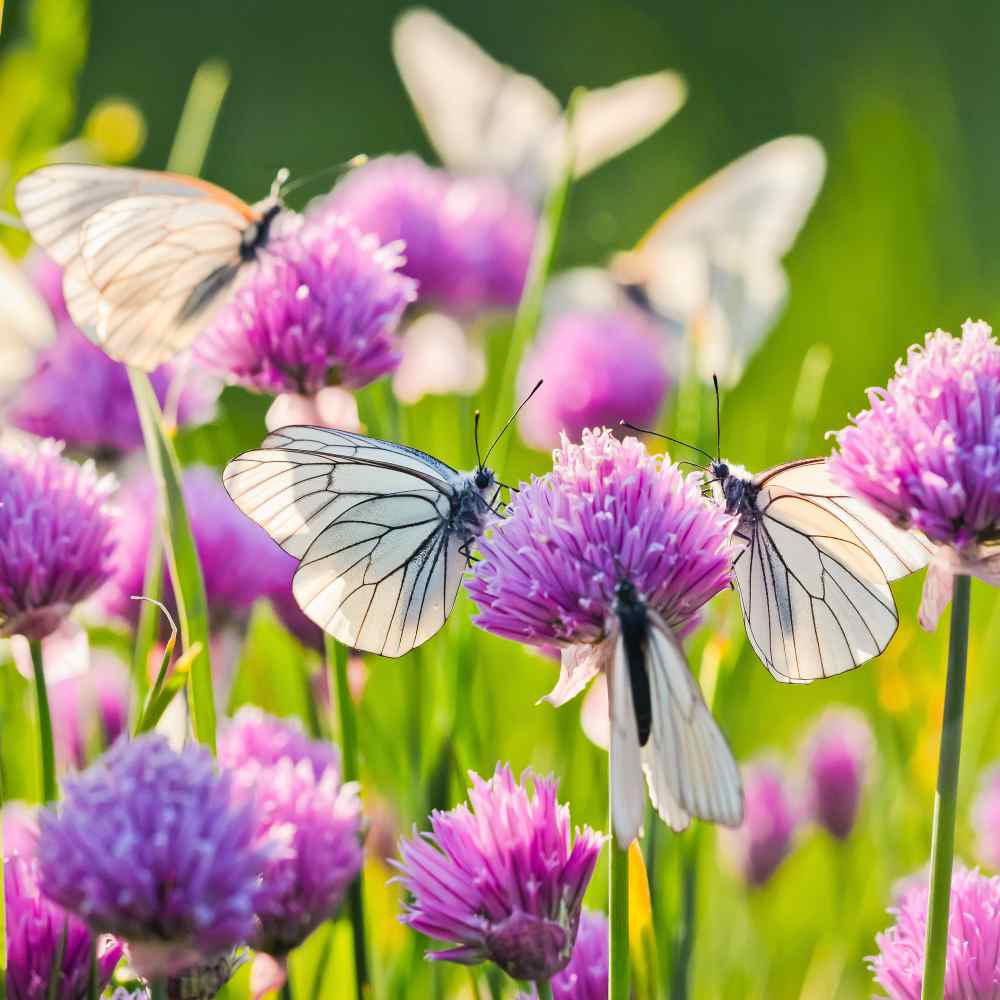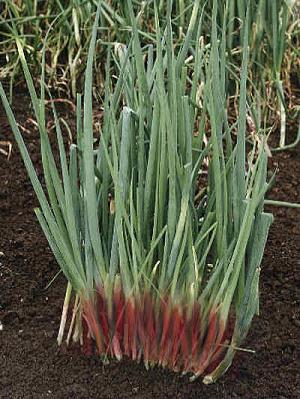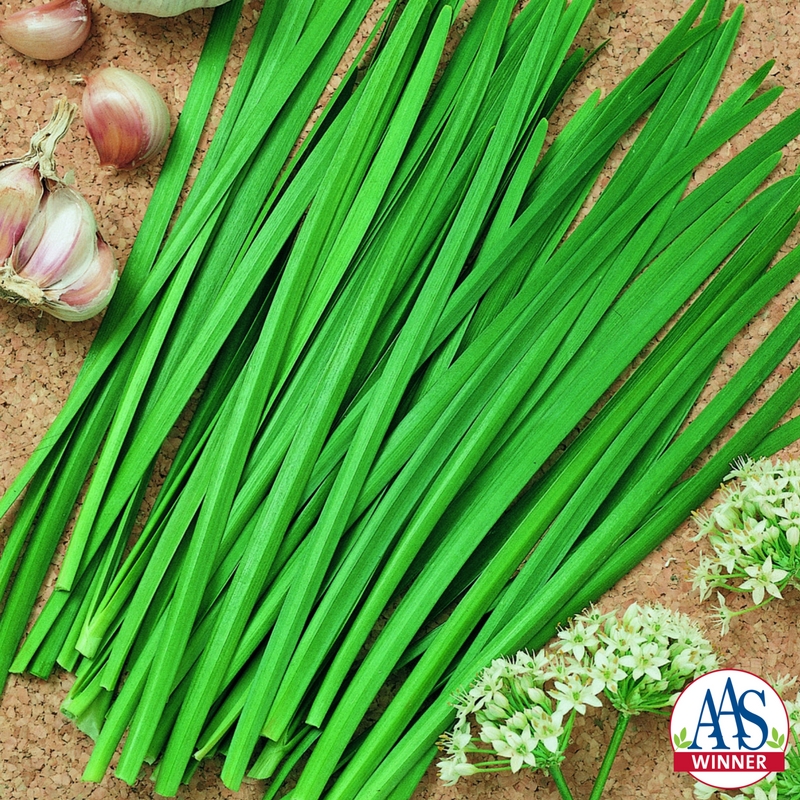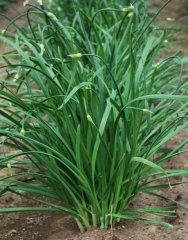New Account | Seed Mix |
Gift Certificates |AAS Winners |
Gardening Products
SEEDS: Unusual | Annuals | Perennials | Vegetables | Herbs | Trees
Chives Seed
Growing onion chives? You're not alone. Many gardeners grow them for their leaves and rosy purple flowers, both of which boast a mild onion flavor. They grow well in the ground or any pot, even a small one, or the pockets of a strawberry jar.
Garlic chives (Allium tuberosum), also known as Chinese chives, are grown for their mildly garlic-flavored leaves and pretty white flowers. The leaves are flat, not hollow like those of onion chives (Allium schoenoprasum).
Useful gardening infomation
Informative articles found on the web:
Youtube video on growing chives

HR127 Chives ( Allium schoenoprasum )
Great for dressing up potatoes and spicing up salads, Chives are easy-to-grow from herb seeds, and their lavender flowers make an attractive clump or edging in gardens. Chives are a must-have kitchen herb and are perfect for almost any savory dish. The Chives herb has tubular leaves that add a delicate onion flavor to cooking. They also make a nice garnish too with flower heads that can be used! The flowers have an even milder onion flavor.
As soon as the leaves have reached several inches in height, you can start harvesting the desired amounts for the kitchen. Cut the leaves with scissors, leaving 1 - 2 inches above the ground. Begin at the outside edge of the plant and work toward the center. Chop the leaves and use fresh or freeze for year-round use.
Chives herb uses include being companion plants to repel insect pests. Plant these herb seeds near almost any plant that is bothered by insect pests and the Chives will instantly drive them away.
As soon as the leaves have reached several inches in height, you can start harvesting the desired amounts for the kitchen. Cut the leaves with scissors, leaving 1 - 2 inches above the ground. Begin at the outside edge of the plant and work toward the center. Chop the leaves and use fresh or freeze for year-round use.
Chives herb uses include being companion plants to repel insect pests. Plant these herb seeds near almost any plant that is bothered by insect pests and the Chives will instantly drive them away.

HR131 Chives, Garlic ( Allium tuberosum )
If you like traditional Chives, and you are also a lover of garlic, then try these Chives seeds and grow Garlic Chives. The subtle garlic flavor of Garlic Chives is perfect for use in uncooked dishes where raw regular garlic might be overwhelming or too spicy.
The flowers produced from Garlic Chives herb seeds bloom during the summer months which is much later than traditional chives. These blooms are also edible, and they attract bees as the nectar in this herb is rich. Many gardeners even cut the blooms for indoor flower arrangements. They dry well for dried arrangements too.
Like most of the Allium family, Garlic Chives plants do have a small bulb that can be used like a small green onion. You may harvest these small bulbs while the flower is still a bud. Harvest the leaves as desired once they are about 6 inches long. Pick the leaves from the base by hand. Garlic Chives leaves are very soft and quickly lose freshness. Like Chives, Garlic Chives may be frozen.

3476 Welsh Onion Red Chives
Welsh Onion Red is a very popular cultivated vegetable and an important ingredient in Asian cuisine. In Japan it is used in miso soup and in the takoyaki dumpling dish, among others.
It is a versatile plant, the seeds can be used as sprouts, the leaves snipped for use in salads or the whole plant pulled up. It is often grown in a bunch as an ornamental plant.The Red Welsh is an old form of the perennial bunching onion with very decorative red stalks and a slightly stronger flavoured than the white variety.
It is also slightly hardier. It is distinguished from the bulb onion by its round hollow leaves and only slight bulb formation. They are an interesting addition to a vegetable plot or herb garden that, once established, tend to look after themselves.
The flowers are attractive to bees, while the whole plant is an effective insect repellent. It is very easy to grow from seed, extremely hardy and pest resistant. It will grow from cold regions right through to hot, tropical areas.
It is a versatile plant, the seeds can be used as sprouts, the leaves snipped for use in salads or the whole plant pulled up. It is often grown in a bunch as an ornamental plant.The Red Welsh is an old form of the perennial bunching onion with very decorative red stalks and a slightly stronger flavoured than the white variety.
It is also slightly hardier. It is distinguished from the bulb onion by its round hollow leaves and only slight bulb formation. They are an interesting addition to a vegetable plot or herb garden that, once established, tend to look after themselves.
The flowers are attractive to bees, while the whole plant is an effective insect repellent. It is very easy to grow from seed, extremely hardy and pest resistant. It will grow from cold regions right through to hot, tropical areas.

SF262 Geisha Garlic
2015 AAS Vegetable Award Winner. The second of three organic herbs in this grouping of AAS Winners, Geisha is a vigorous grower with a nice ‘just-right’ garlic flavor. Slightly wider, flatter and more refined leaves topped by pretty white flower stalks late in the season mean this is another edible that can serve a dual purpose as an ornamental.
Geisha is a great culinary herb for use in stir-fries, soups, compound butter, and as a fresh garnish for a variety of dishes. Although late flowering is a good thing in herbs, when Geisha does burst into bloom, the butterfly inhabitants in your garden will be very happy!
Geisha is a great culinary herb for use in stir-fries, soups, compound butter, and as a fresh garnish for a variety of dishes. Although late flowering is a good thing in herbs, when Geisha does burst into bloom, the butterfly inhabitants in your garden will be very happy!

JB143 Flowering Leeks ( Allium tuberosum )
This popular Chinese specialty herb is a vigorous perennial. It is grown for its young flower buds, long stems and slender flat deep-green blades that grow up to 14". All of these parts are edible including mature flowers and have a delicate garlic onion flavor. This variety is suitable for harvest from mid spring to early fall when grown in a greenhouse, and from late spring to late fall when grown in the field. Sufficient vegetative growth (1-2 years) plus low temperatures in winter and long summer days are needed for flowering. Generally, Chinese leek will not flower in the first growing season.

